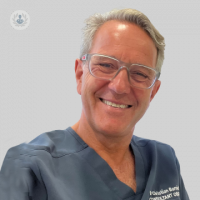Fibroids and endometriosis: what they are and common symptoms
Written by:What are fibroids? What is endometriosis?
Fibroids and endometriosis are two very common problems that women have during their reproductive years. Fibroids can cause period problems and endometriosis may cause a lot of pain.
Together, they may be a very difficult problema. Due to the fact that they are both quite common, they both often appear in the same woman, which often interferes with fertility.

What are the most common symptoms of fibroids and of endometriosis? How are they diagnosed?
Fibroids are often detected in women because they find that their periods are very heavy. Normally the periods themselves remain regular, because the lining of the womb is not affected. Howver, because the blood supply to the womb is increased by the fibroids and the cavity of the womb is increased in size, bleeding tends to be heavier.
Additionally, if fibroids become, very large, this could cause pressure symptoms. It can push on the bladder, causing urinary frequency and it can push on the bowel, causing constipation. In some cases, they become so large that patients can see and feel them.
Endometriosis presents in a different way. It tends to cause pain. Pain occurs typically around the time of menstruation but it can occur at any time in the cycle. Pain can also present around the time of ovulation, as well as the time of menstruation.
They aslo feel pain when they open their bowels and they can experience pain during sexual intercourse.
With endometriosis pain tends to be the main symptom, rather than an increase in bleeding.
Some women also have adenomyosis, which is endometriosis between the muscle fibres of the womb itself. It can cause enlargement of the womb and increase in blood supply. Due to this, women who are suffering from adenoymosis tend to have very heavy and painful periods.
Can fibroids and endometriosis be treated in a similar manner?
Fibroids and endometriosis represent two completely different conditions. They can occur simultaneously but they are treated quite differently.
Fibroids need to be removed or somehow deprived of estrogen or their blood supply. If being treated, they can be surgically treated/removed through key hole surgery. However, doctors normally try to if they can treat them through medication.
They will use drugs which turn off the endogenous estrogen production. If estrogen is turned off, the hormones that are keeping the fibriods alive is cut off. Therefore the fibroids cut off and decrease in size.
They may also try to take away the blood supply to the fibroids, which has a similar effect, named embolisation. Here, microparticles can be introduced into the blood supply to the fibroids in the womb which then block the small blood vessels which supply the fibroids. The fibroid is cut off from its lifeline and decreases in size.
They will not vanish completely but they will shrink down and decrease in size. As a result, the symptoms they do produce will decrease.
Endometriosis is also treated using key hole surgery, if doctors make the decision to operate. They aim to drain the endometriosis, cut it out and also divide all the adhesions that the endometriosis may have caused.
It is very difficult to perform because the anatomy is often very disorted. They have to be very careful that they do not damage organs that are affected or stuck together. They are concerned with the bowel, the bladder and the urethers (the tubes that come down from the kidneys to the bladder itself). They are also concerned with the blood vessels on the pelvic side wall, which they want to avoid.
If they use key hole surgery, it is quite a different type of surgery. Again, because the outcomes can be difficult with surgery, they try to treat medically in the first instance. With endometriosis there is a few more options.
They have option of using progesterone type drugs which change the nature of the endometriosis and make it less active and less problematic.
They also have drugs which switch off the estrogen in the same way as they can do with fibroids. Again, endometriosis is estrogen dependent., therefore cutting off the estrogen supply makes the endometriosis go quiet. The inflammation and the pain it is causing vanishes to a large extent but unfortunately things are still left stuck together.
Sometimes they need to combine medical and surgical treatment when dealing with the conditon.


